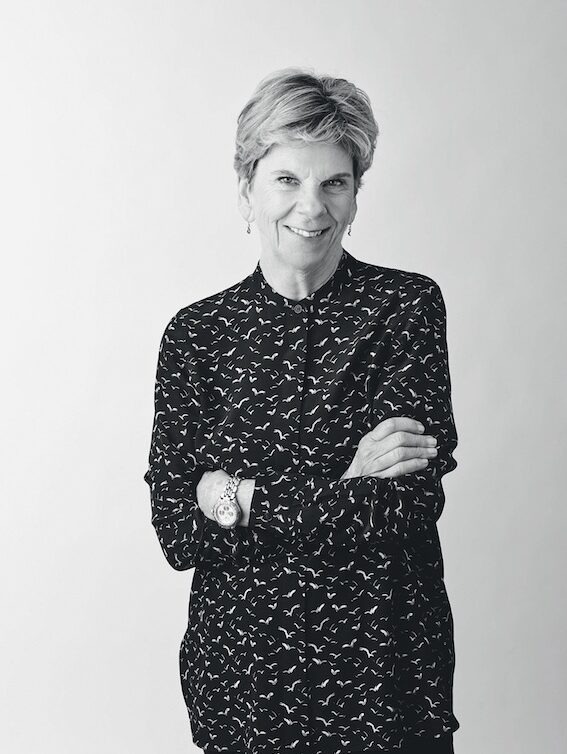Silicon Valley high-flyer DocuSign publishes data on the race and ethnicity of its employees and senior leaders, information that isn’t always flattering. Brunswick spoke with DocuSign’s Chief People Officer on its commitment to transparency.
How DocuSign manages to rank among the best places to work in America, year after year, is no trade secret. Chief People Officer Joan Burke has detailed the company’s practices and strategies in interviews with CNN,The New York Times,Business Insiderand various human resources publications. She has been especially accessible during the pandemic, detailing measures DocuSign has taken in support of its employees. A new free-of-charge mental health benefit, for instance, was highly appreciated among DocuSign employees. Early in the pandemic, “we also announced an emergency childcare and eldercare benefit,” Burke told Human Resource Executivein December 2021.
DocuSign doesn’t limit its transparency to points of pride. On its website, it posts data showing that women, who account for 37.9% of employees at DocuSign, hold 27.4% of leadership roles. That data also shows that DocuSign’s US workforce is 64.2% white and 4% Black or African American. DocuSign says the data is current as of January 31, 2021. It also says, “Race and ethnicity information is based on data voluntarily reported by US employees. Less than 6% of our employees as of January 31, 2021, declined to provide such data.”
More and more companies are sharing data on race and gender by leadership and total workforce. DocuSign, the dominant player in e-signature and contract management software, openly addresses a Silicon Valley sore spot: race and gender by tech versus non-tech job. Women, for instance, hold a smaller percentage of tech jobs than leadership roles, according to DocuSign’s website.
Unlike its great-place-to-work honors, DocuSign sees its Diversity, Equity & Inclusion data as no cause for celebration. On its website, DocuSign in 2020 announced six goals it hopes to reach by 2024, including a 25% increase in under-represented racial and ethnic groups in US tech roles, a 20% increase in global representation of women in tech roles, and a 30% jump in leadership diversity.
DocuSign also lays out its five-part strategy for reaching those goals. One part requires everyone involved in hiring to undergo “License to Interview” training, “to disrupt bias in our hiring processes and understand the importance of building a diverse candidate slate and diverse slate of interviewers.
At a fast-growing company, hiring is key to the pursuit of diversity. Since March of 2020, DocuSign has essentially doubled the size of its workforce by hiring about 4,000 employees. That that month marked the unofficial start of the pandemic in the US is no coincidence, for when COVID rendered wet-signature rituals a health hazard, an effective work-from-home culture developed overnight thanks in part to DocuSign. During the first year of the pandemic its revenue grew nearly 50%. Not that DocuSign’s fast growth started with the pandemic. Revenue grew by more than 35% annually both in 2018 and 2019.
In a Zoom interview with the Brunswick Social Value Review, Burke spoke about the challenges of meeting the company’s 2024 DE&I goals, saying, “We are (on target) in a couple of areas and we’re not in others.” A decades-long human resources leader in Silicon Valley, Burke says that sharing information is the norm in her field, adding that she meets regularly with her counterparts from other tech firms. “There’s a great amount of sharing of information,” she says. “That’s what I love about HR people, they really want to help others do well.
In 2020, DocuSign committed to the following goals by FY24:
Increase US representation of under-represented racial and ethnic groups by:
30% overall
25% in tech roles
30% in leadership roles
Increase representation of women by:
15% globally
20% in tech roles
30% in leadership roles
Is the transparency of your Diversity, Equity & Inclusion data relatively new or has DocuSign always collected and posted it?
It is relatively new, within the last 18 months. We collected the information in the past but didn’t post it. But Dan Springer is a CEO who believes in transparency, and we are a company that does. So, when we decided to do it, it was like, “Oh, yeah, of course.” We didn’t even debate it.
Has posting it had any impact?
It’s been a great opportunity to show that we’re anorganization that cares tremendously about diversity, equity and inclusion, and a company that is going to hold itself accountable to update this information on an ongoing basis.
We’ve got three DE&I goals. One is around diversity, which is to have lots of different kinds of people, and ways people think about things in the organization. Also, inclusivity. We want to infuse inclusion into everything we do. And the last thing is holding ourselves accountable. Publishing this information is a way for us to hold ourselves accountable in a public way, to our employees, to candidates, to investors, and to people who have an interest in DocuSign and want to make sure we’re doing the right thing.
Has anyone said, “Gee, DocuSign’s numbers aren’t as good as they could be”?
Sure. Internally we’ve got some of that, saying, “How come we’re not doing better than we are?” We’ll own it and say, “We are not pleased with where we’re at.” We’re not dissimilar from a lot of tech companies and benchmark companies that we compare ourselves against. We’re quite like a lot of them. But we don’t think tech in general has done a very good job with increasing diversity in terms of women in leadership and, in general, under-represented minorities in leadership and throughout the organization.
We’re OK with the criticism, and we feel like by being transparent, it’s a good way for us to say we’re measuring this, and we know you’re looking at us, and we care about it.
Is DocuSign taking other steps to advance their DE&;I initiative?
Going forward, we’re putting DE&I measures into our executive compensation plan. The bonus plan for Dan Springer and his team will include metrics for the percentage increase in women and under-represented minorities in leadership and in under-represented minorities in the organization. That’s a powerful message, to our employees and executives.
I’m also pleased to announce that we just hired our first Chief Diversity and Engagement Officer, who will be starting in March. We’ve had a DE&I function, but not at the chief diversity officer level. That was an important statement to our organization, to our employees and to our external stakeholders, that we’re serious about this. This is a person who is going to have responsibility for helping guide the organization and getting us to where we want to go. This is a person with great experience.
We’re doubling down on infusing inclusion throughout the organization. We have 12 very strong employee resource groups (ERGs), including ones for employees who are Black, Asian, LGBTQIA+, veterans, caregivers, or affected by disabilities. We also have multiple ERGs for women.
We’re OK with the criticism, and we feel like by being transparent, it’s a good way for us to say we’re measuring this, and we know you’re looking at us, and we care about it.
What are the biggest challenges to achieving your DE&I goals?
One is that we’ve been growing so quickly as a company, which can create the need to hire fast. And hiring fast is not the best way to get diverse candidates. You’ve got to slow down and make sure you’re finding the right talent, and that you have a diverse slate of candidates so you can hire with intention.
And it’s been tough for some hiring managers, not because they haven’t been willing or wanting to do it, but because they’re under pressure to deliver. Our growth numbers have been so crazy that that has absolutely been a challenge. And the recruiters are under tremendous pressure to get slates of candidates there. We have to find a way to slow down, which is at odds with what we need to do as a business.
Is tracking and posting workforce data labor intensive?
Our analytics team has great tools that are able to present this information. We also meet quarterly with each of the top seven people in the company to report back to those leaders what their numbers look like, and we provide a playbook of what we think they should do. One of the things I learned years ago in my career is that data at the highest level is very interesting, but it doesn’t become actionable until you bring it down closer to home.
When our leaders see how they are doing versus how the company is doing, there is much more of a sense of a personal obligation to fix any problems. Sales is a great example. Our sales leader, Loren Alhadeff, is committed to this, because frankly, sales management tends to be mostly men. No matter how hard it is to hire some people, Loren is always challenging us to make sure he sees diverse candidates, because he looks at his numbers and says, “I’ve got to do better. I’m not OK with this.” That’s been important for each of the executive team members.
Have there been areas of improvement worth noting?
A goal of Dan’s a couple years ago was to make sure the board was diverse, and now we’ve got three women on the board of directors. We’ve got Cain Hayes, who’s an African American man. When I joined the company in 2017, I think we had one woman on the board. And now the board chair, Maggie Wilderotter, is a woman.
As for the leadership of the company, of the seven of us on Executive Staff, three of us are women.
It was 2020 that you posted your goals for ’24. Are you on target to meet the 2024 goals?
We are in a couple of areas and we’re not in others. And we know where we need to do the work, and the work is really in the under-represented minority group. Cain Hayes said to me, “Joan, are you losing minorities to other organizations?” And I said, “Well, first of all, we’re proud of our turnover rate. We’ve seen turnover increase, but we’re well below the tech business average. Our Black and our Latinx employees are easy for people to want to come after because DocuSign is a great company that hires great people.”
How do we make sure that we don’t lose any more of that talent? One thing we hear people say is, “I’m not seeing enough people who look like me at senior levels,” which is why bringing in Black and Latinx leadership is really a priority of ours.
That’s been very challenging. We need to continue to do better there. No matter what we’re hiring for, if it’s a senior person, we’re not going to make that hire unless we have seen minority candidates. We’re going to hire the best person, but we’re not going to allow Mr. VP or Ms. VP to make that hire unless they have shown us that we have interviewed and considered a diverse panel.
As of January 31, 2021, DocuSign in the US was:
64.2% white
21.3% Asian
13.5% other ethnic groups
Leadership positions:65.7% white
Tech roles:52.4% white
Non-tech positions:71.5% white
Women made up:
37.9% of employees globally
27.4% of leadership roles
26% of tech roles
What do you think tech companies should start, stop, or continue doing when it comes to diversity, equity and inclusion, and metrics?
Well, if they’re not measuring it, they better darn well soon measure it and they should set goals. It’s not just that you have a measure, but that you want to know where you’re going and hold yourself accountable. I think what we’re doing in terms of adding it to our executives’ compensation program is important.
It isn’t just that it’s about the money for the executives, but what it says to our employees and candidates about how serious we are about this. I think it’s important for organizations to measure employee engagement on an ongoing basis. And one of the questions we ask is around belonging. We ask people how they feel about DocuSign. Do they feel like this is a place where they belong, where they’re valued?
We ask that question on every single engagement survey we do, about every six to nine months. Because it’s an indicator of the action employees might take in terms of whether they stay or whether they leave your organization.
During the pandemic our employee engagement scores were never better, and I think that was because people saw and felt like DocuSign was trying to do the right thing by them. We put in new benefits, including mental health benefits, we gave people more time off, we shut down over Christmas.
But those are corporate benefits. The belonging question is more specific to an employee’s own work group. One of the great things about the survey is that we’re able to really zero in, and to help managers see exactly where they may have issues.
There are pockets in the organization where we feel like our scores aren’t where we want them to be, but our managers own that, and we give them transparency with that information. And my HR business partners work with them all the time to help make that a priority, and to put in place what it is needed to make sure people feel like they belong. Some of that is, “I’m heard at meetings.” Or, “I’m given an opportunity to voice my opinion.” Or, “I get a chance to make a presentation to senior-level folks.”
Would I like to see our belonging scores even better? Sure. But I’m not displeased with where they are. It’s a journey. We still have work to do.
More from this issue

The S in ESG
Most read from this issue

Power in Numbers





